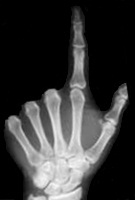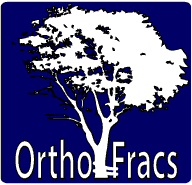Journal Club
April 2010
Combination joint-preserving surgery for forefoot deformity in patients with rheumatoid arthritis
- Authors: H. Niki, T. Hirano, H. Okada, M. Beppu
- Institution: St. Marianna University School of Medicine, Kanagawa, Japan
- Journal: J Bone Joint Surg [Br] 2010;92-B:380-6, VOL. 92-B, No. 3, MARCH 2010
Reviewed by
Dr David Shepherd
MBBS | Accredited Orthopaedic Registrar
Introduction
- Study type
- Retrospective case series
- Level IV evidence
- Non-funded
- Retrospective case series
- Aim
- to assess the outcome of combination joint-preserving surgery for forefoot deformity in patients with rheumatoid arthritis.
- to assess the outcome of combination joint-preserving surgery for forefoot deformity in patients with rheumatoid arthritis.
- Hypothesis
- Preservation of MTP joint function improves gait in patients with rheumatoid arthritis.
- repositioning of the heads of all metatarsals creates a favourable environment for the MTP joint, resulting in a stable long-term outcome.
- Surgical repositioning of the MTP joint by metatarsal shortening and consequent relaxation of surrounding soft tissues should be successful.
- Preservation of MTP joint function improves gait in patients with rheumatoid arthritis.
- Rationale for not arthrodesing 1st MTPJ
- The alignment of the hallux is important, but can be difficult to achieve.
- The rate of pseudarthrosis varies from 0% to 44%
- •Inter-phalangeal joint degeneration can develop after arthrodesis
- Repositioning of the 1st metatarsal head on the sesamoid results in stabilisation of the MTP joint and thus prevents recurrence of the deformity.
- The alignment of the hallux is important, but can be difficult to achieve.
- Formation of callosities
- is not related directly to synovitis and correlates poorly with the degree of bone destruction.
- Loss of joint function because of dislocation of the proximal phalanges is thought to be the primary cause of such formation.
- The preservation of joint function is therefore important to prevent recurrence of callosities
- is not related directly to synovitis and correlates poorly with the degree of bone destruction.
- Oblique shortening basal osteotomy of the second to fourth metatarsals
- Basal osteotomy allowed easy exposure and reduction of the MTP joint by means of rigid internal fixation.
- Dissection of the surrounding soft tissue minimised, preventing postoperative joint contracture.
- Shortening and elevation of the metatarsal heads possible simultaneously, and able to adjust position in relation to each other.
- Basal osteotomy allowed easy exposure and reduction of the MTP joint by means of rigid internal fixation.
Methodology
- Inclusion/exclusion criteria
- Inclusion
- severe pain, deformity, plantar callosities and mild or moderate destruction of the metatarsal heads.
- The interphalangeal joint of the hallux was healthy
- No valgus deformity of the hindfoot
- severe pain, deformity, plantar callosities and mild or moderate destruction of the metatarsal heads.
- Exclusion
- infection or ulceration of the forefoot and previous hindfoot or forefoot surgery
- Severe MT head destruction
- infection or ulceration of the forefoot and previous hindfoot or forefoot surgery
- Inclusion
- Outcome Parameters
- Japanese Society for Surgery of the Foot and Ankle scale
- Validated
- Scores range from 0 to 100 points
- Pain (30 points),
- deformity (25 points),
- movement (15 points),
- walking ability (20 points)
- activities of daily living (10 points).
- Validated
- Examined post-operatively for symptomatic plantar callosities and residual toe deformities.
- Japanese Society for Surgery of the Foot and Ankle scale
- Subjective assessment was by questionnaire using two methods,
- the foot function index
- The index is validated and reliable for measuring foot pain and disability.
- The index is validated and reliable for measuring foot pain and disability.
- comprehensive 36-item Short-Form health survey (version 2)
- the foot function index
- The hallux valgus angle and intermetatarsal angles
- The position of the head of the first metatarsal relative to its sesamoid and the relationship between the shortness of each metatarsal and the congruency of each MTP joint were also examined
- Surgical Method
- Summary
- 1st tarso-metatarsal fusion + distal re-alignement (modified Lapidus with shortening)
- Shortening oblique osteotomy of bases of 2nd – 4th metatarsals
- 5th metatarsal diaphyseal osteotomy ( modified Coughlan)
- 1st tarso-metatarsal fusion + distal re-alignement (modified Lapidus with shortening)
- 1st metatarsal
- Wedge from base determined on pre-operative X ray by abduction and shortening to reposition MT head over the lateral sesamoid, and align head with base of phalanx.
- Intermetarsal angle approaching 0.
- Bunionectomy, distal soft tissue procedure, medial capsule plication
- Abduction/shortening/supination and fixed to medial cuneiform at same angle of the 2nd MT
- 3.5mm cannulated cortical screw + 3mm - Lis Franc screw
- 2nd to 4th Metatarsals
- Dorsal incision between 2nd and 3rd MT + incision over 4th
- Oblique osteotomy > 45° to long axis.
- Distal fragment dorsal and proximal. 2nd MT shortened to same level of 1st MT.
- 3rd , 4th shortened to created smooth arc
- 3mm cannulated cortical screw
- Dorsal incision between 2nd and 3rd MT + incision over 4th
- 5th Metatarsal
- Lateral 5th MT incision – mid proximal phalanx to base 5th MT
- Osteotomy with blade transverse and superiorly angled
- IR of distal fragment gives medial, superior and proximal movement of fragment.
- Dorsal and collateral MTPJ ligament releases
- K wire fixation of MTPJ 2nd-5th
- Lateral 5th MT incision – mid proximal phalanx to base 5th MT
- Postop
- Bulky dressing 1/52
- BKPOP 7/52 - PWB
- Wire removal 2/52
- FWB and ROM at 7/52
- Bulky dressing 1/52
- Summary
- Statiscal analysis
- paired t-test
- paired t-test
Results
- Callosities
- Any symptomatic plantar callosities seen pre-operatively disappeared in all patients
- Any symptomatic plantar callosities seen pre-operatively disappeared in all patients
- Contracture
- Severe contracture of the PIP joints pre-operatively had a slightly restricted range of movement in these joints post-operatively.
- MTP ROM
- Those with moderate pre-operative destruction of the metatarsal heads tended to have restricted movement of the MTP joint post-operatively
- Radiological
- In patients who showed favourable repositioning during follow-up
- head of each metatarsal was repositioned to the level of the proximal part of each dislocated proximal phalanx on pre-operative radiographs
- head of each metatarsal was repositioned to the level of the proximal part of each dislocated proximal phalanx on pre-operative radiographs
- In patients who showed favourable repositioning during follow-up
- Complications
- None
- nonunion,
- recurrence of deformity,
- formation of callosity
- infection
- Delayed wound healing
- five feet
- five feet
- None
- Outcome measures
- SF-36 (mean, SD)
- 34.9 (2.3 to 55.1) for physical functioning
- 32.4 (1.7 to 46.0) for physical role
- 39.5 (22.5 to 61.4) for bodily pain
- 35.6 (18.1 to 48.9) for general health
- 38.7 (31.8 to 56.4) for vitality
- 39.8 (11.1 to 57.1) for social functioning
- 43.8 (31.1 to 56.6) for emotional role
- 43.8 (38.5 to 54.4) for mental health
- 34.9 (2.3 to 55.1) for physical functioning
- total foot function index score (mean)
- 19.3 (16.6 to 23.2).
- pain, 18 (14.2 to 29.6)
- disability 23 (4.2 to 59.3)
- activity 16 (2.1 to 34.7),
- 19.3 (16.6 to 23.2).
- SF-36 (mean, SD)
Discussion
- Preservation of the MTP joint by proximal osteotomy as opposed to resection arthroplasty can be expected to give better correction, function and appearance beneficial for correcting forefoot deformities in patients with early or intermediate rheumatoid arthritis.
- Compared to previous RCT of Arthrodesis/ resection, no difference was found in the index score, but plantar callosities and residual deformity were absent post-operatively in study.
- Joint-preserving operation was more effective for forefoot callosities and recurrence of deformity than joint sacrificing procedures.
Pros of Study
- 2 year follow-up
- Allows further surgery if required
Cons of Study
- Retrospective case series. 30 patients
- Wide range in mean scores and angles in the results
- Recurrence of soft tissue laxity as part of RA pathology.
Take home message
Joint preserving surgery in rheumatoid forefeet can lead to good functional results
Webpage Last Modified:
4 September, 2010



